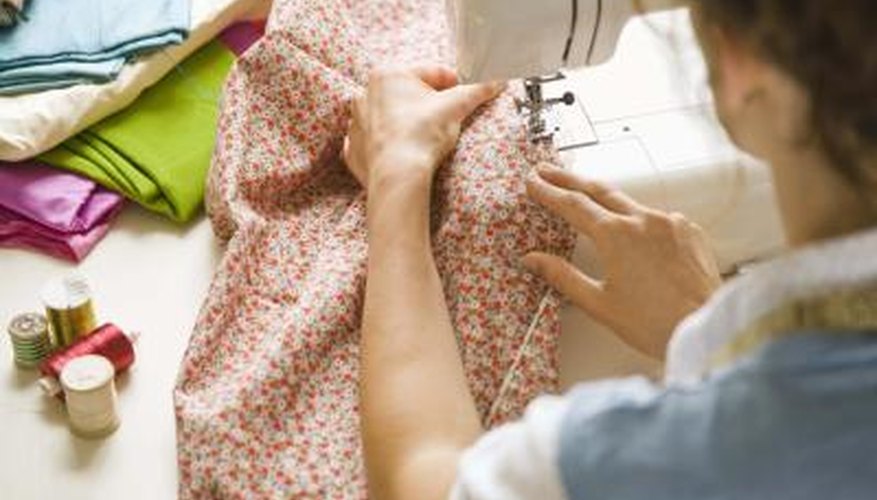French seams are very attractive seams that completely encase the raw edges of material so that only a neatly sewn seam can be seen. They are often used in high-end garment construction, as well as in making pillow or duvet covers -- they can make the seam of any sewing project appear neat and tidy. French seams are a little more time consuming than a regular seam, but are not complex. Sewing a French-seam corner is much the same as sewing any other French seam, just a little fiddlier, as corners always are.
- French seams are very attractive seams that completely encase the raw edges of material so that only a neatly sewn seam can be seen.
- They are often used in high-end garment construction, as well as in making pillow or duvet covers -- they can make the seam of any sewing project appear neat and tidy.
Place the material piece with wrong sides together, corners matching. Sew a 3/8-inch seam along the raw edge using a straight stitch on a sewing machine. Move the material sharply 90 degrees to turn the corner, then continue straight along the side.
Trim the raw edge of the material to an 1/8-inch seam allowance using scissors.
Turn the material inside out, so that the right sides are together. Use your finger to poke out the corner so that it creates a nice angle.
Flatten the material with your hand, and manipulate the joint of the seam so that it is at the edge of the material. Press the seam flat with an iron.
- Trim the raw edge of the material to an 1/8-inch seam allowance using scissors.
- Flatten the material with your hand, and manipulate the joint of the seam so that it is at the edge of the material.
Sew along the material using a 1/4-inch seam allowance from the edge. Again, stop when you reach the corner and turn the fabric a sharp 90 degrees to turn the corner, then continue on.
Press the fold to 1 side with an iron so that it lies flat. Turn the material right side out and press the seam flat again. Your French-seam corner is complete.
